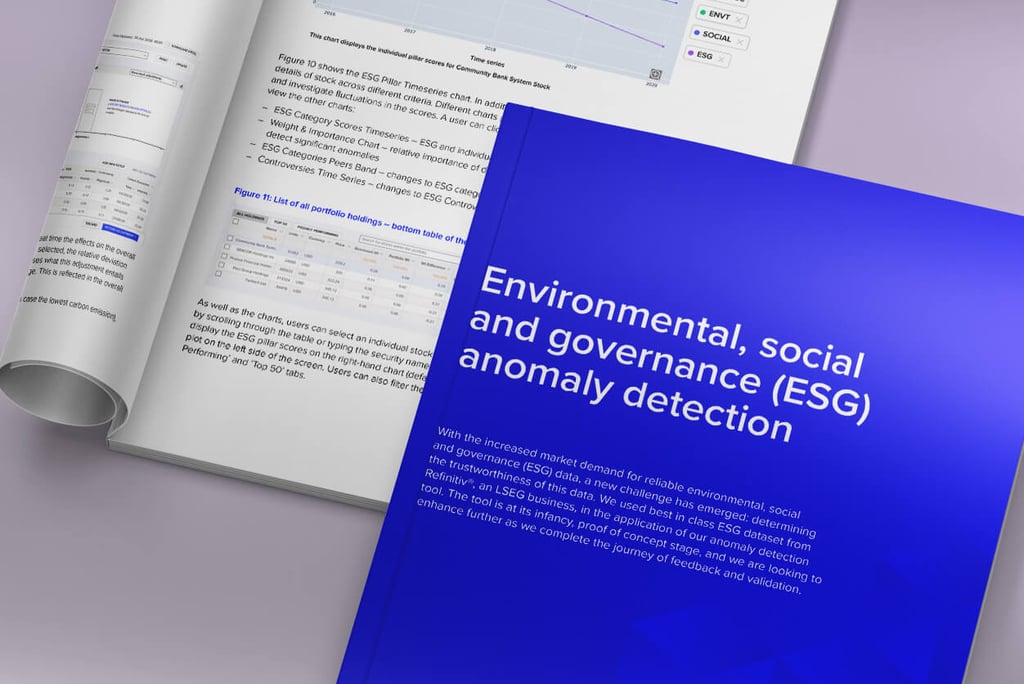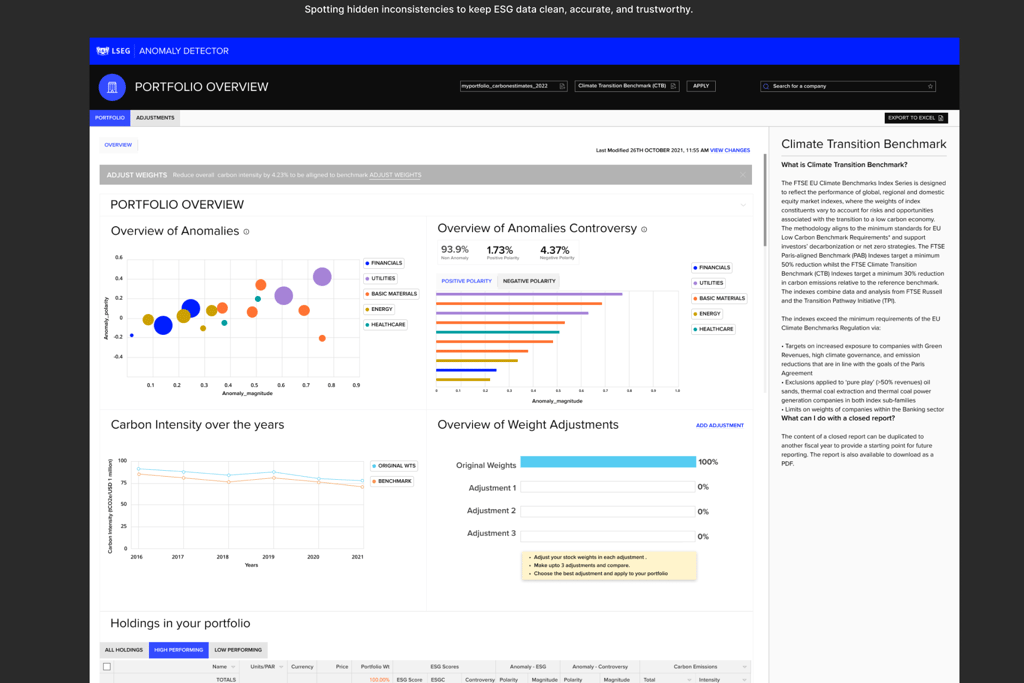Anomaly Detection In ESG data
Spotting hidden inconsistencies to keep ESG data clean, accurate, and trustworthy
Experimental | White Paper
3/6/20232 min read
Overview:
LSEG’s ESG Anomaly Detection framework strengthens the quality and credibility of sustainability data by flagging values that don’t align with expected sector, geographic, or peer benchmarks. It gives investors, issuers, and regulators clearer, more reliable ESG insights — helping them make stronger, data-backed climate and sustainability decisions.
How It Works
Normalizes messy data from multiple sources so everything speaks the same language.
Benchmarks companies against sector and peer expectations.
Uses rules + statistical checks to flag values that are incomplete, inconsistent, or implausible.
Applies ML-driven pattern detection to surface subtle anomalies that humans might miss.
Filters for materiality so users focus only on what truly matters.
This approach goes beyond overall ESG scores by analyzing granular category-level changes, helping uncover anomalies that traditional methods miss.


My Role:
UX Lead shaping the end-to-end experience for anomaly detection and review within an LSEG Labs innovation project.
Partnered closely with data scientists and ESG SMEs to turn complex model logic into clear, user-friendly explanations.
Designed intuitive patterns for flagging, reviewing, comparing, and validating ESG anomalies.
Created visualization concepts for severity levels, peer benchmarking, and anomaly reasoning to support decision-making.
Delivered a workflow now actively used by the LSEG QA team to improve sustainability data quality and consistency.
UX Focus — Designing Trust in Complex Data
My UX role centered on making a highly technical model usable, explainable, and trustworthy for non-technical users. The challenge: anomaly detection is complex — so the interface had to simplify insight without hiding necessary context.
Key UX considerations included:
Explainability: Designing clear indicators for why something was flagged, what it means, and how it compares to peers.
Clarity of Severity: Visual hierarchy to distinguish critical anomalies from mild deviations.
Traceability: Drill-downs that let users trace anomalies back to underlying disclosures.
Comparability: Peer-benchmark visualizations that make deviations intuitive at a glance.
Workflow Integration: Ensuring the anomaly review steps fit seamlessly into ESG analysis, reporting, and due-diligence workflows.






Why It Matters
This framework goes beyond top-level ESG scores by analyzing granular, category-level changes and context. It highlights irregularities that would otherwise slip through traditional reporting, improving transparency, audit readiness, and investor confidence.